Like it or not, we live in a digital age. Nearly everything we use requires power, and that need for electricity doesn’t end when we head out into the backcountry. Many of us like to run GPS on our phones or iPads, take photos of our adventures with a camera, or might even need to work remotely on a laptop. Whatever electronics you find yourself using, they’ll eventually need to be charged, and that’s where portable battery packs come in. We’ve used a range of options from Anker to Goal Zero in the past, but we recently had the chance to evaluate something a little different called the Kalipak 401.
The Concept
The Kalipak battery bank was developed by an Israeli company as an alternative to diesel generators in places with unreliable electricity. Whether their customers were in an emergency situation, a disaster zone, or just out on a weekend camping trip, this company’s goal was to keep them connected in an environmentally friendly way. Of course, making an effective solution that can work in day-to-day use and life or death situations is far from easy. The Kalipak needed to be durable enough to survive harsh environmental conditions, reliable enough to use over and over again, versatile enough to power almost any type of small electronics, and still be affordable enough for anyone to purchase. That’s a heck of a tall order, but after years of development they were successful, and it quickly took off in both the commercial and consumer markets.
Why it’s Cool
There are three different Kalipaks available: the 201, 401, and 601. Our test unit was the middle of the range 401, which they tout as the “Best Value Solar Generator on the Market,” and thus far, I’d have to agree. At just $299 USD, this little unit comes with a 384Wh 26Ah battery and a 40-watt collapsible solar panel. Compare that to the similarly specced Yeti 400 (396Wh 33Ah) with a 28-watt folding panel, and you’re looking at a price of $699 USD. Kalisaya’s battery also weighs just 12 pounds, while the Yeti clocks in at 29 pounds before you even count the solar panel. So, the bottom line is that you have nearly all of the performance for less than half the weight and cost.
What We Like
Over the past few months, we’ve had the chance to use the Kalipak for things like powering several iPads at a show, charging laptops on the road, even running an Engel fridge, and so far it has exceeded my expectations. The battery life has been excellent, and I am continually surprised to find it chugging along at 50 percent power when I assumed it would have been dead. Using the pack is very intuitive as well. Just plug in your devices and click the power button and you’re ready to go. Thankfully, there aren’t a million proprietary cables like we’ve seen with other brands either.

What cables it does come with fit neatly inside the Polycarbonate case, so there’s no mess to tote around. There’s also plenty of room for other chargers and accessories, so that you can keep everything in one organized location. The solar panels even fold neatly inside, which is a huge plus for both transport and protection.
I also really liked that the Kalisaya app can tell you everything you want to know from the exact battery percentage remaining to the expected life of the device at the current consumption rate, but that you don’t have to use it. For those times when you just want to glance over and get a general idea of how things are going, there’s an easy to see light on the front which reflects the battery percentage in colored dots.
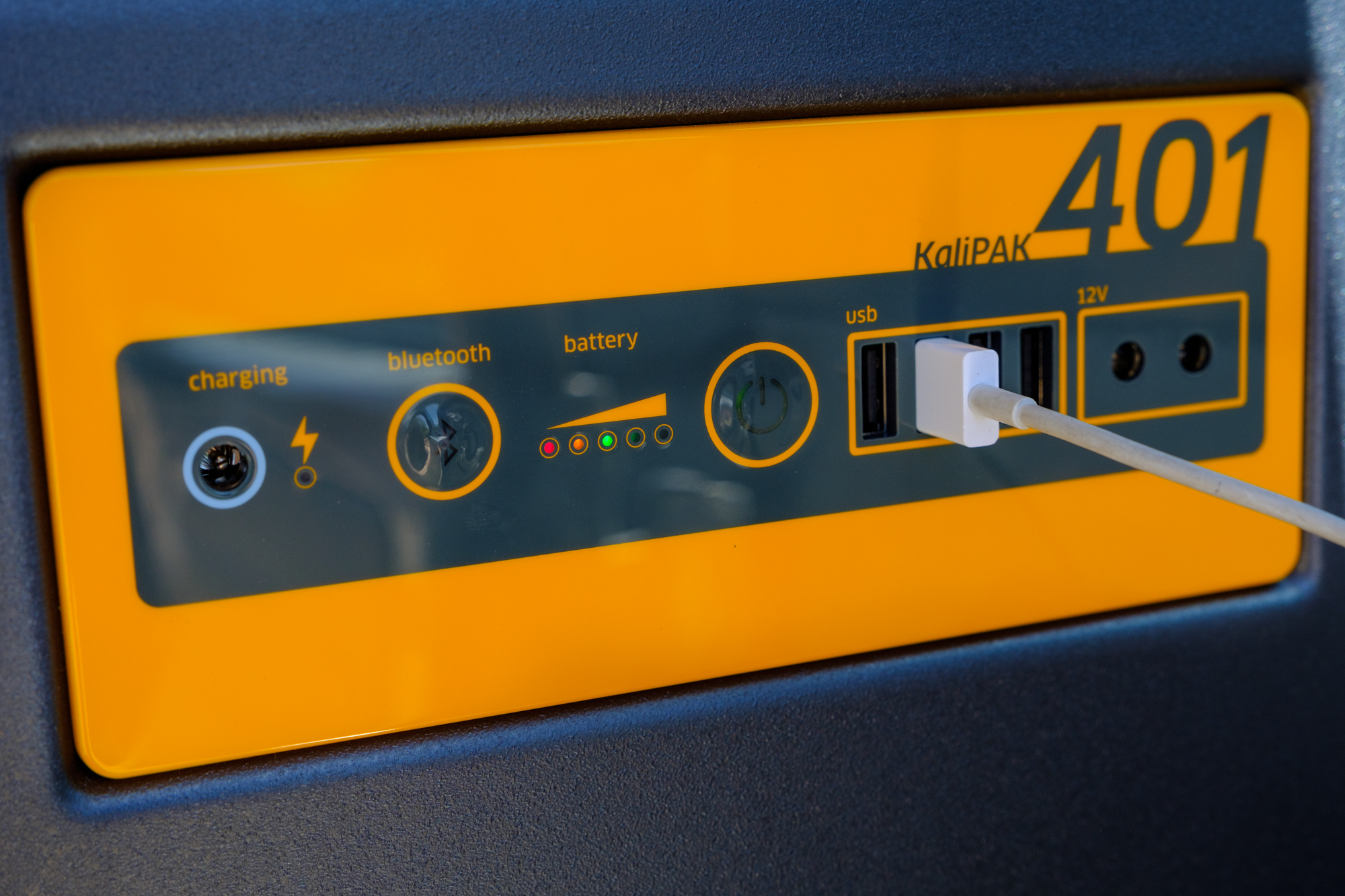
As someone who has undergone two back surgeries, the low weight of the Kalipak was another big win. It’s easy to pick up and move around, which should be a major consideration for a portable power pack. The lightweight case also has two tie-down points, which are mounted in a way to allow the Kalipak to sit upright and be unzipped and rezipped. Basically, you can use the thing when it is tied down, which is something far too many manufacturers overlook.
Charging can be achieved using the included solar panels, or via a 12-volt car charger which can be purchased for an additional $29 USD.
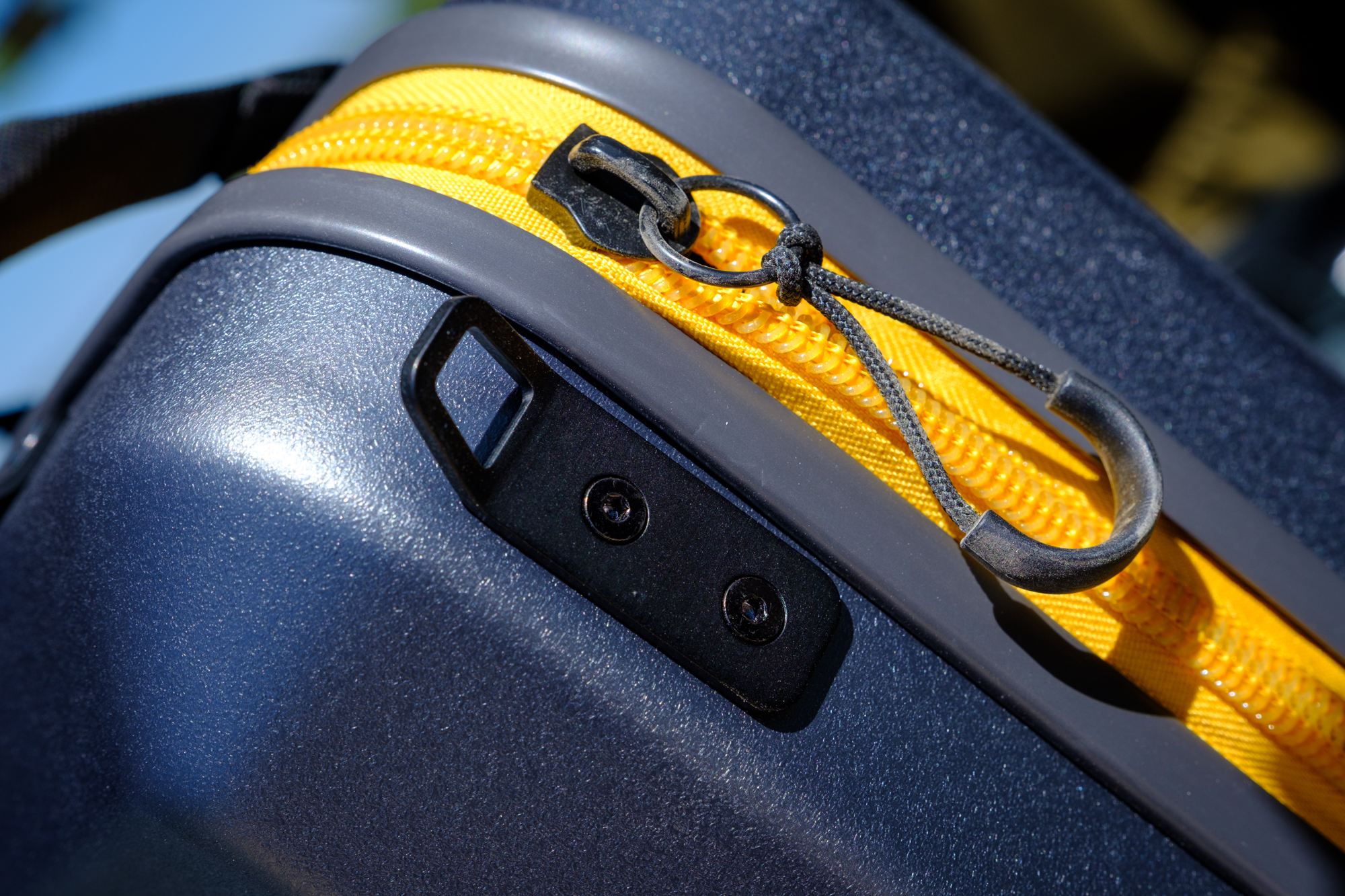
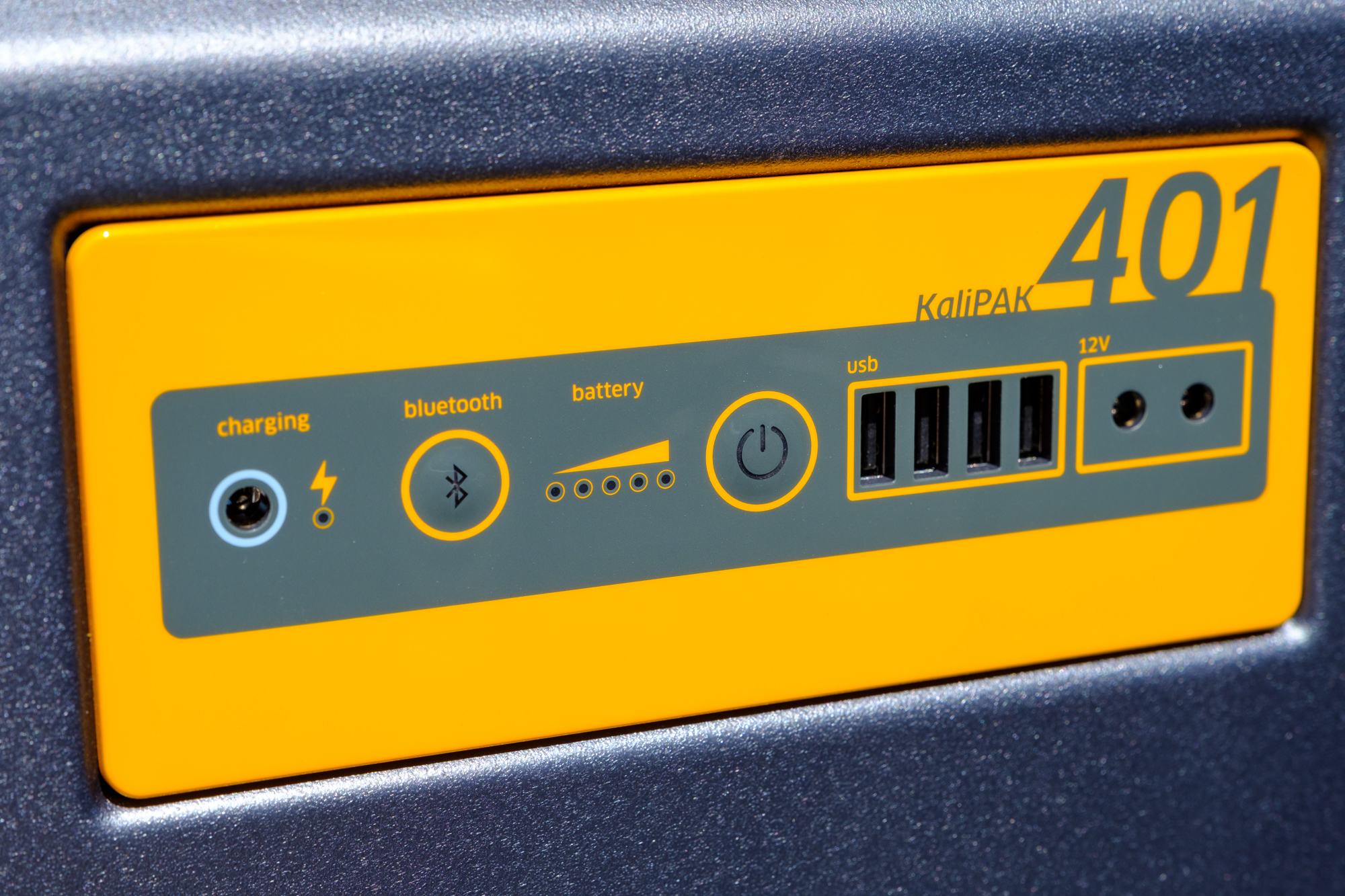
What We Don’t Like
As good as the Kalipak is, there are some drawbacks. For starters, it is sort of bulky, with dimensions of 13.3 x 13.3 x 6.5 inches. The Goal Zero Yeti, which isn’t really that much smaller at 10.25 x 8 x 8 inches, seems to fit into far more nooks and crannies in the vehicle, making storage much easier. While trying to wedge the battery pack into a corner of our BJ74, I also discovered that the case is pretty easy to scratch, so don’t be surprised when your nice gray power pack ends up with scuff marks in short order. Still, this additional size is merely the trade-off for all of that nice storage inside the case, which is worth it in my opinion.
Another drawback for me was the notable lack of a 110 outlet. While its true that stepping the power up to 110 volt, then converting it back down to your devices’ needs is inefficient, most people buying a battery like this would expect to be able to have at least one standard outlet to plug into. I certainly did. In the end, I purchased a direct car charger for my MacBook Pro, and utilize that with the Kalipak for mobile power.
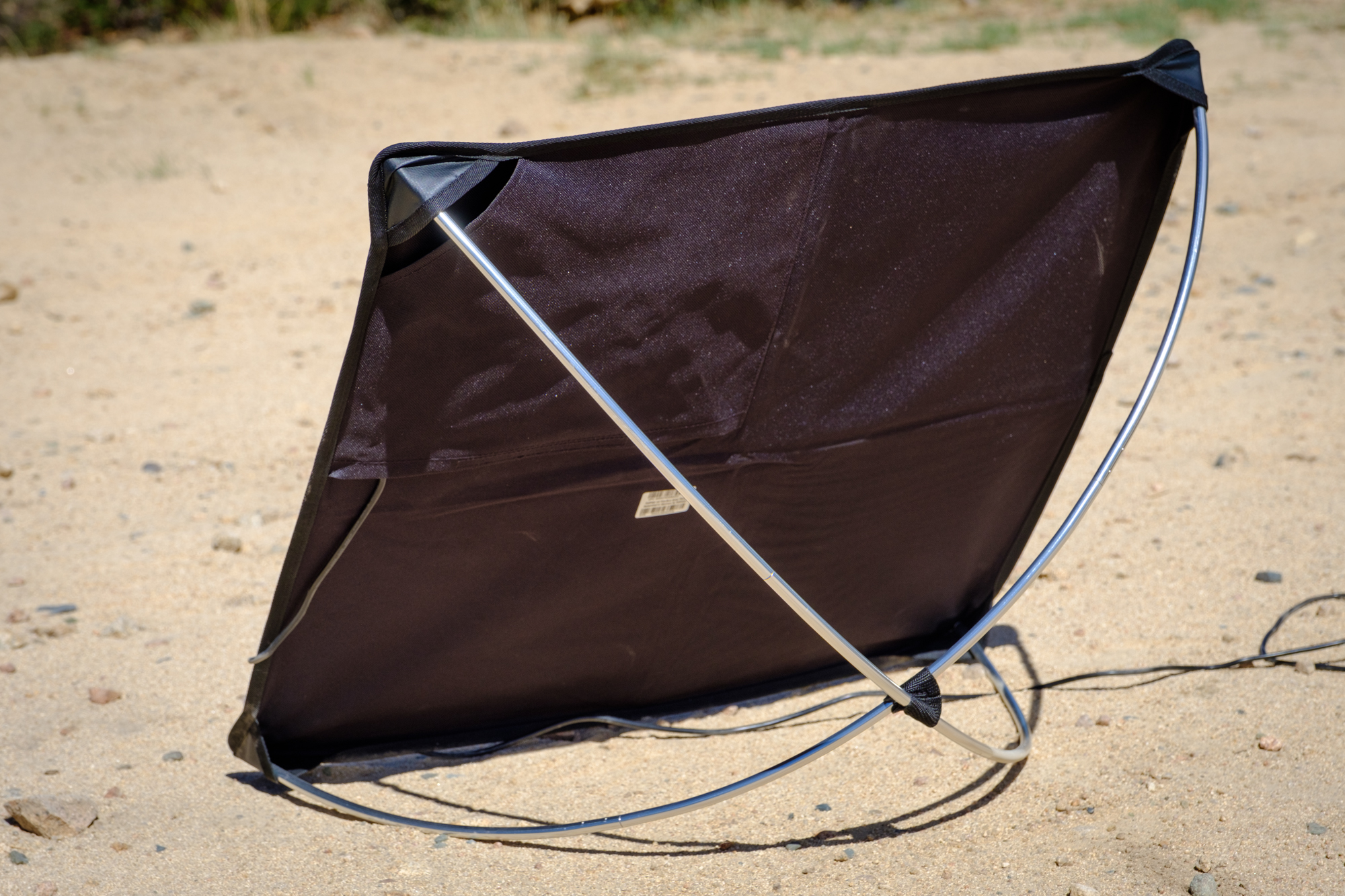
My final beef is minor and easily remedied, but was still sort of annoying. The tent pole structure behind the folding solar panel is rounded to give it a good position up toward the sun, but it tends to rock back and forth in the wind. This means that you’re never getting an efficient charge, and most often, the panel will end up blowing over. It needs to be weighted down by something for reliable energy.
Conclusions
Although it’s not perfect, I would say that the Kalipak represents a serious value in the battery bank market. At the current price of $299 USD, it is significantly cheaper than the competition, is far lighter, and includes more accessories. While it does lack some features found on more expensive models, I’d say that most customers will find that a worthy trade-off for the value.
To learn more about the Kalipak, check it out on their website here.


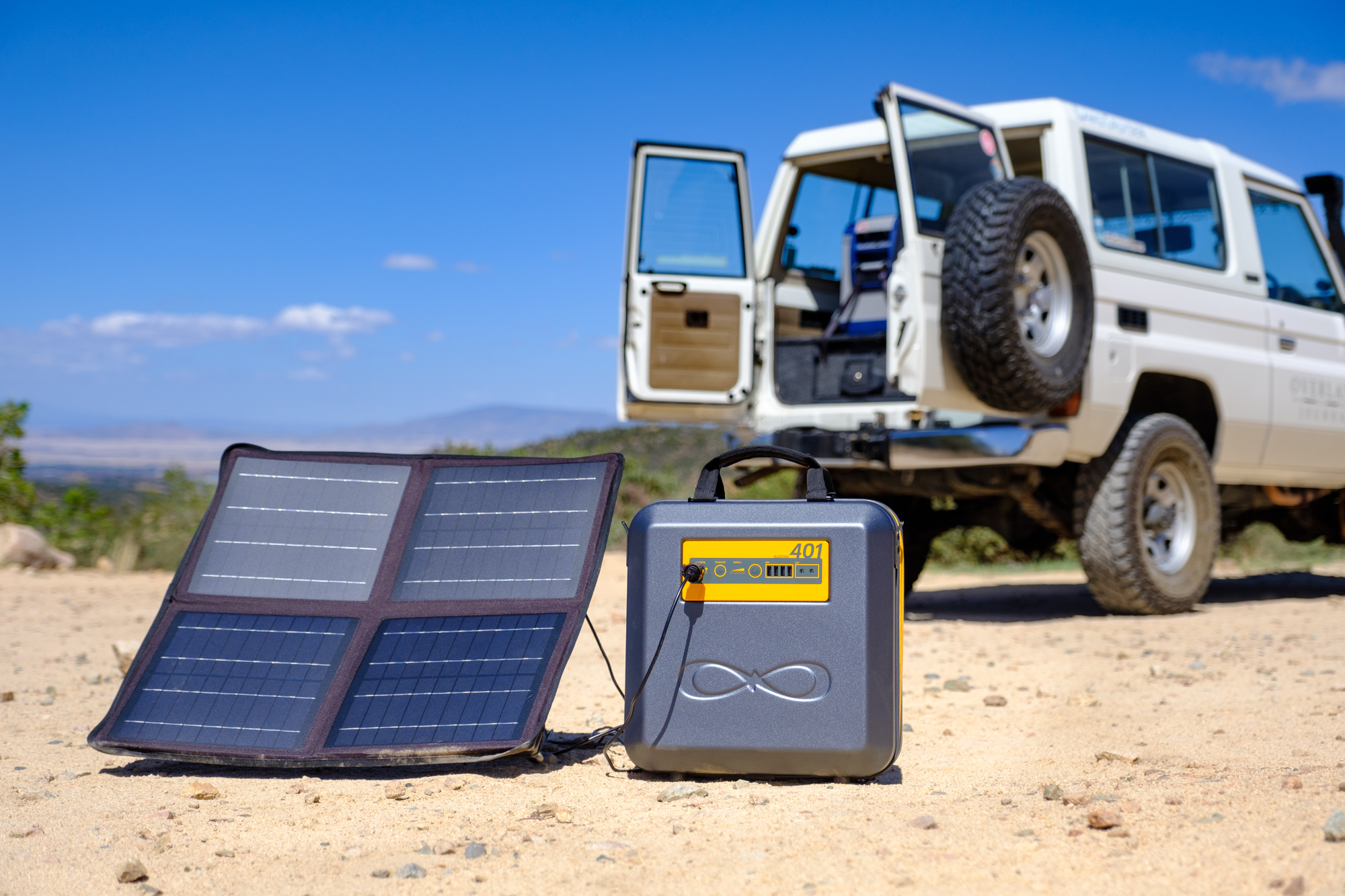



One Comment
Pablo Magallanes
August 24th, 2018 at 7:24 pmIt would be great if a test was done suppling power for that ARB fridge to see if it could be a stand alone power source for 2 weeks of fridge usage.
Thanks for the write up. It’s great!